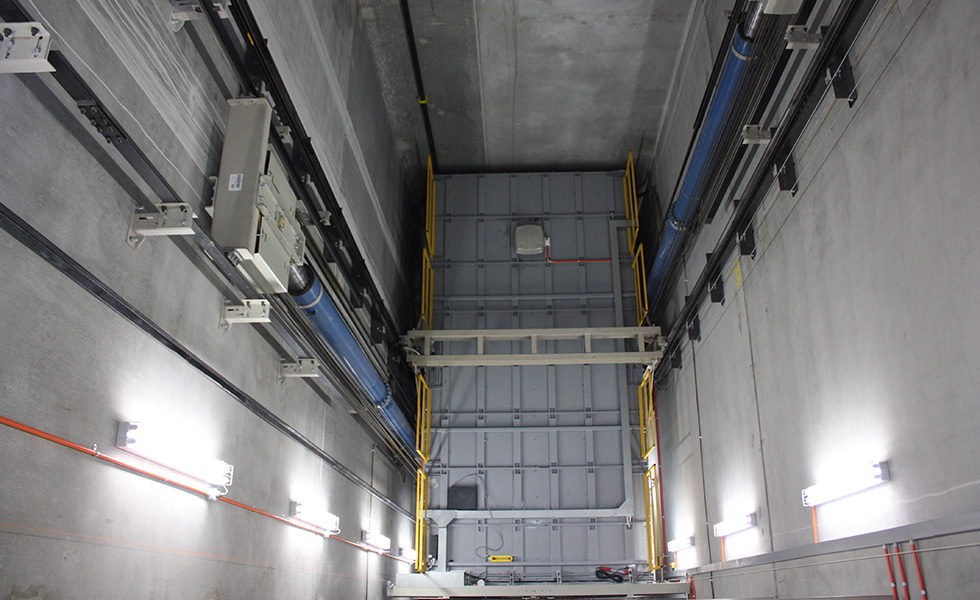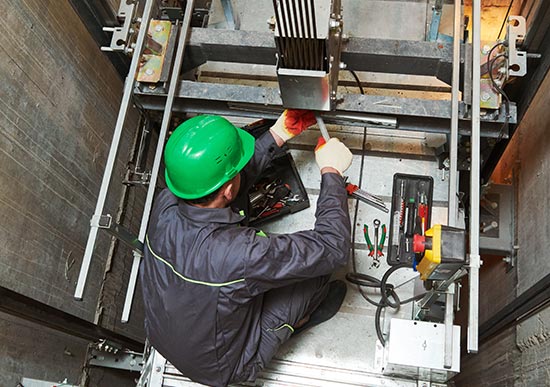How Lift Maintenance London Sticks Out Amongst Local Lift Repair Companies
How Lift Maintenance London Sticks Out Amongst Local Lift Repair Companies
Blog Article
Crucial Elements to Take Into Consideration for Elevator Maintenance
When it comes to the secure and reliable procedure of elevators, taking into consideration crucial maintenance elements is vital. Lifts are elaborate systems that require careful focus to detail to function accurately. From routine evaluation routines to adhering to appropriate lubrication strategies, each element plays an important function in making sure the lift's long life and safety and security. However, overlooking these upkeep techniques can bring about unforeseen downtime, security dangers, and expensive repair work. It is necessary for developing managers and upkeep workers to stay ahead of these variables to promote the elevator's performance criteria and conformity needs.
Regular Examination Schedules

Conducting regular examinations not just enhances the total efficiency of the elevator yet also plays an important duty in following safety and security guidelines and industry criteria. It makes sure that the elevator runs smoothly, reducing the threat of unforeseen breakdowns that can hassle owners or compromise safety and security. Furthermore, regular assessments contribute to lengthening the lifespan of the lift equipment, eventually reducing upkeep costs and downtime.
To enhance the inspection process, several building proprietors partner with certified lift upkeep companies that concentrate on conducting thorough evaluations and giving prompt maintenance solutions. By prioritizing routine assessment schedules, stakeholders can support the security, reliability, and performance of their lift systems.
Proper Lubrication Methods
Reliable lubrication techniques are important for keeping the optimum performance and longevity of elevator elements. Correct lubrication techniques play an important function in protecting against wear and tear on moving parts, lowering rubbing, and ensuring smooth operation of the elevator system. When it concerns elevator upkeep, utilizing the appropriate lubricants in the correct quantities at the suggested intervals is crucial to protecting against costly repairs and lessening downtime.
To make sure appropriate lubrication, lift service technicians need to adhere to maker standards relating to the sort of lube to be utilized for particular components such as bearings, gears, and overview rails - lift engineer course. Over-lubrication can draw in dust and debris, leading to part breakdowns, while under-lubrication can trigger enhanced friction and early wear. Regularly scheduled lubrication upkeep must be consisted of in the total elevator upkeep strategy to keep the system running effectively and securely
Checking Use and Tear
Proper lubrication techniques are indispensable in helping with the early detection and monitoring of damage on elevator components. Normal lubrication assists reduce rubbing between relocating parts, preventing too much wear and prospective failures. Monitoring wear and tear goes past just lubrication. Lift upkeep workers should carry out routine assessments to identify indications of wear on crucial components such as ropes, sheaves, guide rails, and bearings. These examinations may entail visual checks, gauging wear limits, and making use of diagnostic devices to analyze the condition of crucial components. In addition, keeping comprehensive maintenance documents can assist in tracking the wear patterns of elevator components gradually, enabling predictive upkeep preparation. By carefully keeping track of deterioration, upkeep teams can attend to problems proactively before they rise right into costly repair services or unanticipated downtime, ensuring the reliable and safe operation of the elevator system.

Safety Conformity Checks
Performing complete safety and security compliance checks is necessary in making certain the elevator system satisfies all regulative criteria and operational requirements. Safety compliance checks include a detailed examination of different components such as emergency situation brakes, door sensing units, interlocks, and electrical systems to ensure they are operating correctly. Routine inspections by licensed specialists assist identify prospective safety and security threats before they intensify into major problems, making certain the safety and security of passengers and compliance with industry policies. These checks likewise entail verifying that the lift's ability limits, speed, and emergency communication systems are in line with safety requirements. Additionally, adherence to safety compliance checks can stop mishaps, lower liability dangers for structure owners, and prolong the life expectancy of the elevator system. By prioritizing safety conformity checks as part of routine upkeep, building managers can maintain a reliable and risk-free vertical transport system for owners.
Emergency Action Planning
Due to the crucial relevance of safety conformity sign in maintaining lift systems, a robust emergency feedback planning method is paramount to quickly and properly address unforeseen events. lift maintenance services. Emergency situation feedback preparation for lifts entails aggressive actions to ensure the safety of passengers and maintenance workers in case of emergency situations such as power failures, entrapments, or mechanical failures
Secret components of an effective emergency best site feedback plan consist of establishing clear communication procedures, giving normal training to staff on emergency procedures, maintaining updated emergency get in touch with checklists, and performing regular drills to exercise feedback activities. In addition, it is vital to have actually assigned employees liable for working with emergency situation feedbacks and guaranteeing that required equipment, such as emergency lighting and communication tools, remain in functioning order.
Verdict
In verdict, it is critical to focus on normal assessment routines, appropriate lubrication techniques, keeping an eye on deterioration, safety compliance checks, and emergency situation feedback preparation for elevator maintenance. By implementing these essential factors, structure owners can guarantee the safety and performance of their lifts, inevitably minimizing the danger of breakdowns and mishaps. Constant maintenance practices are find out crucial for extending the life expectancy of elevators and guaranteeing the well-being of individuals who count on them for transport.
Routinely arranged lubrication maintenance must be included in the overall lift maintenance strategy to keep the system running effectively and safely.
Lift maintenance employees must conduct regular inspections to recognize signs of wear on crucial components such as ropes, sheaves, overview rails, and bearings. Additionally, maintaining detailed upkeep documents can help in tracking the wear patterns of lift components over time, enabling for anticipating maintenance preparation. By carefully monitoring wear and tear, maintenance groups can deal with problems proactively prior to they intensify right into costly repair work or unanticipated downtime, guaranteeing the efficient and secure operation of the elevator system.

Report this page